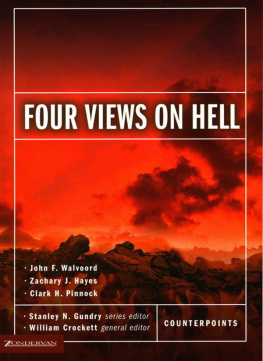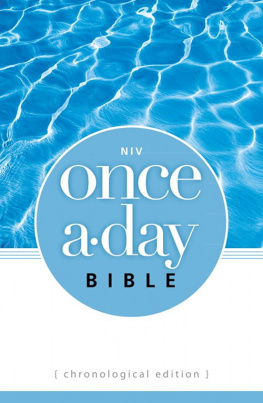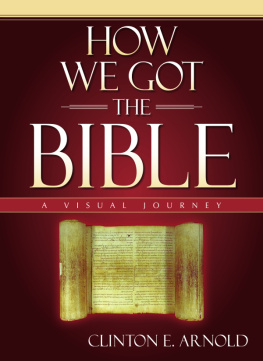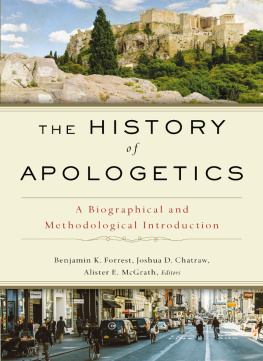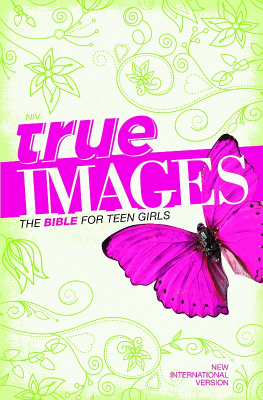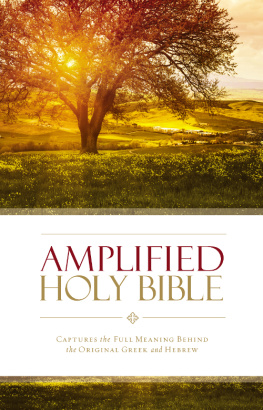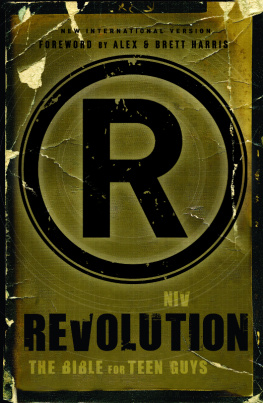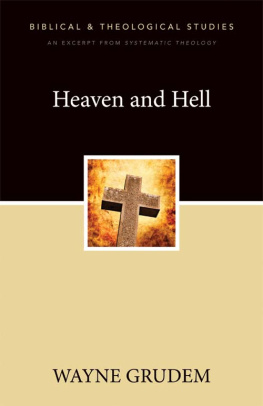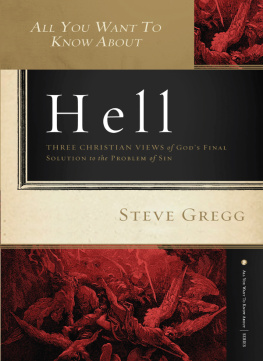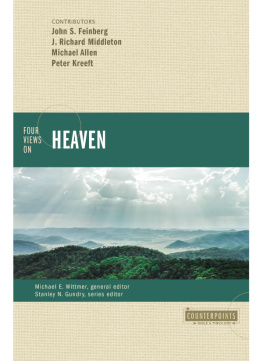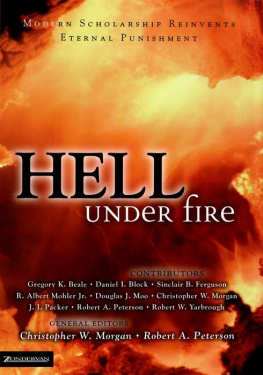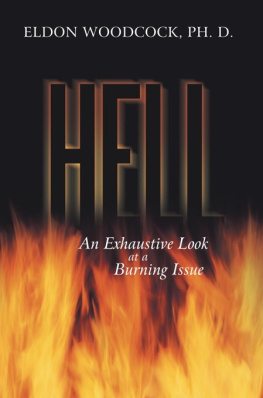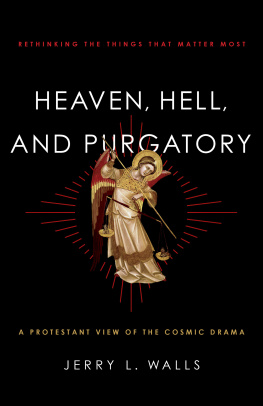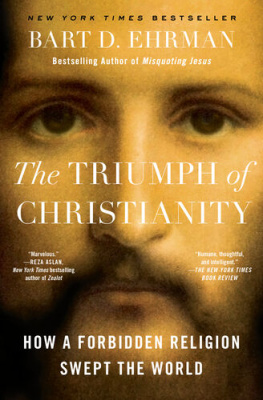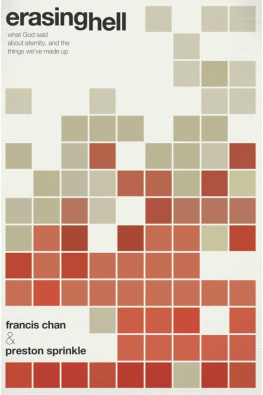Books in the Counterpoints Series
Church Life
Evaluating the Church Growth Movement
Exploring the Worship Spectrum
Remarriage after Divorce in Todays Church
Understanding Four Views on Baptism
Understanding Four Views on the Lords Supper
Who Runs the Church?
Bible and Theology
Are Miraculous Gifts for Today?
Five Views on Apologetics
Five Views on Biblical Inerrancy
Five Views on Law and Gospel
Five Views on Sanctification
Four Views on Christian Spirituality
Five Views on the Church and Politics
Four Views on Divine Providence
Four Views on Eternal Security
Four Views on Hell
Four Views on Moving beyond the Bible to Theology
Four Views on Salvation in a Pluralistic World
Four Views on the Apostle Paul
Four Views on the Book of Revelation
Four Views on the Historical Adam
Four Views on the Role of Works at the Final Judgment
Four Views on the Spectrum of Evangelicalism
Genesis: History, Fiction, or Neither?
How Jewish Is Christianity?
Show Them No Mercy
Three Views on Creation and Evolution
Three Views on Eastern Orthodoxy and Evangelicalism
Three Views on the Millennium and Beyond
Three Views on the New Testament Use of the Old Testament
Three Views on the Rapture
Three Views on the Doctrine of the Trinity
Two Views on Women in Ministry
ZONDERVAN
Four Views on Hell
Copyright 2016 by Preston Sprinkle, Denny Burk, John Stackhouse Jr., Robin Perry, and Jerry Walls
ePub Edition February 2016: ISBN 978-0-310-51664-4
Requests for information should be addressed to:
Zondervan, 3900 Sparks Drive SE, Grand Rapids, Michigan 49546
Library of Congress Cataloging-in-Publication Data
Four views on hell / Denny Burk, John G. Stackhouse Jr., Robin A. Parry, Jerry L. Walls; Preston M. Sprinkle, general editor. Second Edition.
p. cm.
Includes bibliographical references and index.
ISBN 978 0 310 51646 0 (softcover)
1. Hell Christianity. I. Sprinkle, Preston M., 1976 editor.
BT836.3.F68 2016
2015030118
All Scripture versions used in this book are listed on page 7, which hereby becomes part of this copyright page.
All italics appearing in Scripture quotations are the authors choice for emphasis. Italics do not appear in the actual Scripture text.
Any Internet addresses (websites, blogs, etc.) and telephone numbers in this book are offered as a resource. They are not intended in any way to be or imply an endorsement by Zondervan, nor does Zondervan vouch for the content of these sites and numbers for the life of this book.
All rights reserved. No part of this publication may be reproduced, stored in a retrieval system, or transmitted in any form or by any means electronic, mechanical, photocopy, recording, or any other except for brief quotations in printed reviews, without the prior permission of the publisher.
Cover design: Tammy Johnson
Cover photography: 2happy/Masterfile
Interior design: Matthew Van Zomeren
16 17 18 19 20 21 22 /DHV/ 20 19 18 17 16 15 14 13 12 11 10 9 8 7 6 5 4 3 2 1
CONTENTS
: Preston M. Sprinkle
Responses
Responses
Responses
Responses
: Preston M. Sprinkle
A ll Scripture quotations in the first essay, unless otherwise indicated, are taken from New American Standard Bible. Copyright 1960, 1962, 1963, 1968, 1971, 1972, 1973, 1975, 1977, 1995 by The Lockman Foundation. Used by permission. (www.Lockman.org).
All Scripture quotations in the second essay, unless otherwise indicated, are taken from New Revised Standard Version Bible. Copyright 1989 National Council of the Churches of Christ in the United States of America. Used by permission. All rights reserved.
All Scripture quotations in the third and fourth essays, unless otherwise indicated, are taken from The Holy Bible, New International Version, NIV. Copyright 1973, 1978, 1984, 2011 by Biblica, Inc. Used by permission of Zondervan. All rights reserved worldwide. www.Zondervan.com. The "NIV" and "New International Version" are trademarks registered in the United States Patent and Trademark office by Biblica, Inc.
Scripture quotations marked ESV Bible (The Holy Bible, English Standard Version). Copyright 2001 by Crossway, a publishing ministry of Good News Publishers. Used by permission. All rights reserved.
PRESTON M. SPRINKLE
T he doctrine of hell has always been part of Christian theology. Unfortunately, hell has had a bit of a checkered past. From the Apocalypse of Peters gruesome depictions of women hanging over boiling mire, to skin curling images of hell in Dantes Inferno, to Jonathan Edwardss blistering sermon Sinners in the Hands of an Angry God, to twentieth-century Bible-belt preachers barking with anger about the wrath to come, hell has been used and some would say abused to scare people into obedience or increase their tithe.
Now, however, Christians are more than ever questioning a traditional view of hell. In the last one hundred years, towering Christian thinkers have described hell in nontraditional terms. Theologians and writers such as Karl Barth, C. S. Lewis, John Stott, and N. T. Wright all believe in hell, but their depictions dont match what many Christians have believed. More recently, the discussion has intensified as an increasing number of proponents of both traditional and nontraditional views of hell have looked to the Scriptures as the basis for their views.
This new Counterpoints book contributes to this rapidly growing debate about the nature of hell. It serves to replace the previous edition of the Counterpoints book on hell, which was published in 1996. This new volume brings in a new set of authors who will espouse fresh insights that build on the flurry of recent books and discussions about the nature of hell.
At the time the previous Counterpoints book came out, the famed evangelical leader John Stott had published his leanings toward annihilation. Evangelicalism as a whole was perplexed and unpersuaded. I remember hearing about Stotts shift and thinking, I thought John Stott was a Christian! Theres nothing in the Bible or the early church creeds that view annihilation as unchristian and heretical. Yet this was a common knee-jerk reaction people had and some still have toward anyone who doesnt believe that hell consists of everlasting conscious torment. But things are different today. Evangelicals are reexamining some cherished doctrines, and the nature of hell is on the table.
There have been three main developments over the last twenty years that have cultivated a need for this new Counterpoints book.
First, the annihilation view of hell has grown in popularity among evangelicals. Many theologians, pastors, and Christian laypeople today are leaning toward or embracing an annihilation view of hell. In the past, it was primarily those who couldnt stomach the traditional view who opted for this softer view of Gods judgment. But now many evangelicals are arriving at this view in light of a fresh look at the biblical text.
Second, Christian universalism is gaining ground as well. While some proponents of universalism the belief that everyone will eventually be rescued out of hell base their view on sentimentality, others are digging it out of the biblical narrative. As you will see in the following pages, there are some powerful biblical arguments that Christians need to wrestle with. No longer can evangelicals scoff at this view as the byproduct of too many hours of Oprah.
Third, an ecumenical spirit is growing among evangelicals. Some Protestants and Catholics have always been able to dialogue, but that number is on the rise, especially among younger believers who find it much harder to write off the faith of their Catholic brothers and sisters. This desire to dialogue has cultivated theological cross-pollination. With regard to hell and the afterlife, Protestants are exploring views that are traditionally considered Catholic, and vice-versa. Purgatory, as we will see in this book, is becoming a theological option among evangelicals, and it needs to be evaluated based on its exegetical and theological strength. It cant be dismissed as being simply un-Protestant (or unchristian).
Next page
